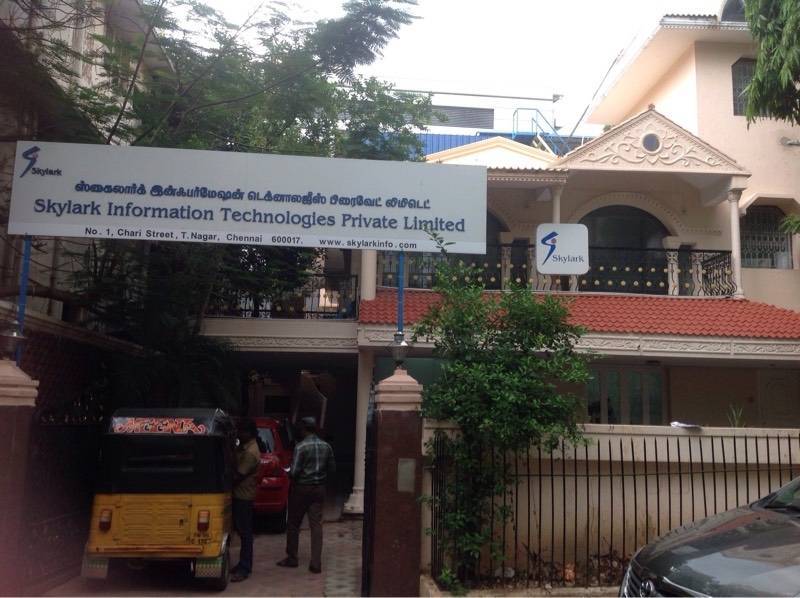Top 10 Best Cybersecurity Companies In India 2022

Top 10 Best Cybersecurity Companies In India 2022
Nowadays everyone has mobile phones in their hand and clicks millions of links on google search engines, emails, WhatsApp messages. The pandemic has prohibited everyone whether it is children or adults to their laptops and mobile phone and this digital world has a lot of side effects when comparing with benefits.
As we all know that there are lots of apps, links and internet connections that are corrupted by hackers to steal your data and information. To protect data, information and privacy everyone need a strong security system to restrict this hacker and anonymous person around.
Cyber Security is a pack of techniques that are operated in order to secure internet-connected systems. It can insulate computers, networks, software, and data. Cyber-attacks are performed this practises in order to bring unauthorised access, disruption or destroy data, or defraud the money from the users.
Ransomware, Malware, Social engineering, and Phishing are some of the popular cybersecurity that is used by cyber-attacks to fool people and to steal their data and private information.

Cyber Security facilitates all institutions and individuals to protect their networks and data from unauthorised entry. As per the research performed by FireEye, population from all over the world spend more than 75 billion on cybersecurity. This is because of the day by day boost in the number of cyber-attack incidents happening each year.
Cyber Security not only protects the systems and data from threats but also gives you many other benefits like increased productivity, gaining customer confidence, protecting customers, and reducing the chances of your website going down.
Cybersecurity is a strategy of securing vital systems and sensitive information from digital attacks. Cybersecurity is also known as information technology (IT) security, cybersecurity measures are formulated to withstand threats against networked systems and applications, it is not fixed whether those dangers arise from inside or outside of an institution.
In 2020, it was reported that the average cost of a data breach was USD 3.86 million worldwide, and USD 8.64 million in the United States. These expenses include the expenditures of discovering and responding to the breach, the cost of downtime and lost revenue, and the long-term reputation ravage to a business and its brand.
Cybercriminals mark customers’ personally identifiable information (PII) – names, addresses, national identification numbers (e.g., Social Security numbers in the U.S., fiscal codes in Italy), credit card information – and then sell these documents underground digital marketplaces. Negotiated PII often leads to a loss of consumer trust, regulatory fines, and even legal action.
Cyber security system complexity, developed by disparate technologies and a lack of in-house expertise can overstate these costs. But institutions with a comprehensive cybersecurity strategy, regulated by best practices and automated using advanced analytics, artificial intelligence (AI) and machine learning, can fight cyber threats more effectively and curtail the lifecycle and impact of breaches when they arise.
In this article, you can find the top Internet security companies in detail and their development status. We have classified the companies as Top cybersecurity companies by Revenue, Top Hottest Companies, Honourable Mention Companies, and Start-ups to consider for cybersecurity.
Top 10 best cybersecurity companies in India.
1.CyRAACS
2. Cyber ops InfoSec LLP
3. AVG India
4. Indian Cyber Security Solutions
5. eSec Forte Technologies
6. Hicube Infosec Pvt. Ltd
7. Skylark Information Technologies Private Limited
8. K7 Computing Pvt. Ltd
9. TAC InfoSec Pvt Ltd.
10. Kratikal Tech Pvt Ltd.
1.CyRAACS

CyRAACS is a cybersecurity company is known as CERT-In empanelled company with mastery in cybersecurity, data privacy, and risk management. The firm started up its journey in 2017 when the cybersecurity consulting space only had niche consulting companies or Large IT services firms having cybersecurity consulting practice as an adjunct service.
Since its beginning, CyRAACS is one of the few players in India delivering consulting and advisory services solely for cybersecurity, with a guide on the Medium-to-Large enterprise segment, that is expected a credible player.
The firm started with a vitality of two and a vision to offer world-class cybersecurity consulting services to clients. In the past 3 years, CyRAACS has accumulated over 60 team members, finished off more than 400 engagements with over 150 clients varying across industry verticals and landscapes.
CyRAACS cybersecurity delivers a complete suite of assistance on Governance, Risk, and Compliance. They also deliver Technical Services in niche areas like Advanced Application Security Testing, Cyber Security Audits, Red Team Assessments, Cyber Forensics, Security Architecture Review, etc. Managed Security Services such as CISO Services and an ala-carte of all the overhead services in a Managed Services model are also empowered.
CyRAACS has expanded a few niche services such as
- A Qualitative and a Quantitative Maturity Model Assessment on Cyber Security a new invention.
- Particular Focus on Work from Home Security Assessment.
- Symmetrical Scorecard to calculate and report metrics-based execution of the Cyber Security program.
- A home-grown tool for Advanced Malware Analysis.
2. Cyber ops InfoSec LLP

Cyber ops rank second in the row of the top 10 cybersecurity companies which has brought next-level digital modification, elevation in technology and skilful configuration for efficient safety against cyber-attacks.
Cyber ops aim to guard digital cyberspace by delivering the consumers a highly productive, agile and better experience. Cyber ops have been thumping to oversee expertise and global footprint in the field of data security and cybercrime investigation.
Cyber ops are known as India’s leading organisation in the field of Information security. Development in technology and interconnected business ecosystems have centralised to boost susceptibility to cyber-attacks.
They aim to digitally safeguard cyberspace by delivering several products and services. They also hover to influence our mastery and global footprint in the area of information security and cybercrime investigation.
They foster certified training on Information Security and deliver penetration testing for security audits, and Cyber, Crime Investigation assistance for several sectors to fulfil their specific needs.
3. AVG India

The third in the row of top cybersecurity comes AVG India which has been withstanding cybercrimes for over 20 years. They have laboratories for inspecting and staving off all preventing a substantial range of security shelters.
They offer privacy, solution and business understanding to consumers. They are presently a part of the avast family of world-leading digital security products, devoted to keeping people around the world safe.
The brand AVG comes from Grisoft’s first product, Anti-Virus Guard which undertook in 1992 in the Czech Republic. In 1997, the primary AVG licenses were sold in Germany and the UK. AVG was inducted in the US in 1998.
The AVG Free Edition assisted to raise awareness of the AVG product line. In 2006, the AVG security package grew to comprise anti-spyware as AVG Technologies acquired Ewido Networks, an anti-spyware group.
AVG Technologies developed Exploit Prevention Labs (XPL) in December 2007 and encompassed that company’s Link Scanner safe search and surf technology into the AVG 8.0 security product range published in March 2008.
In January 2009, AVG Technologies developed Sana Security, a developer of identity theft prevention software. This software was assimilated into the AVG security product range in March 2009.
AVG delivers AVG Antivirus Free for Windows, AVG Antivirus for macOS and AVG Antivirus for Android devices. All are freemium products: They are free to download, install, update and use, but for technical assistance, a bounty plan must be purchased.
4. Indian Cyber Security Solutions
Indian Cyber Security Solutions guarantees to provide an all-round shield against data theft, security breaches, hacking, network vulnerability, virus attacks, system concession, frauds and many more things, through its knack solution package of cyber security audit & assurance, I.T. service supervision, business technology advisory, and information security. It also accumulates B2C relationships not only in producing solution packages also by creating a long-standing assistance system through its talented, skilled, and dynamic professionals.
Indian Cyber Security Solutions is an institution that caters to the desire of technology organised risk management & cyber security solution across the globe. ICSS was founded in 2013 & by this time it has collected a good deal of momentum and has attained an outstanding position out of the prominent firms in this domain in the country.
Indian Cyber Security Solutions as a department of Green Fellow IT Security Solutions Pvt Ltd aims to provide cyber security solutions to private and government organisations across the globe. With around 200+ clients across the globe, ICSS aims at procuring Vulnerability Assessment & Penetration Testing services giving rise to cyber security convenient for every institution.
5. eSec Forte Technologies
exec Forte Technologies is one of the exceptional companies in India that have a CMMI level 3 certification for global consulting and IT services. They have excellent offerings like infosec services, forensic services, malware detection, security audit, vulnerability management, penetration testing and risk assessment. Numerous of their services have been authorised by various quality certification institutions.
They have authorised technology spouses of information security solutions with numerous companies like Tufin, Atola Technology, Cyber Deception and more. exec also manufactures CrackBox, their proprietary tool for password breaking/cracking. They have offices situated in Gurgaon (Headquarters), Bangalore, Mumbai, Singapore and Sri Lanka.
exec Forte Technologies also provides various services such as:-
- Specialised security services have highly skilled Security delivery sessional Services, at eSecForte special care is given to eradicating security threats. The SPS has a tremendous track contract when it comes to delivering security services.
- Security assessment services provide security assessment and are aimed at contributing to ding assessment of the situation and difficulties at every level. This is wielded to analyse and control any weaknesses and problems with the system.
- The Compliance Services are exclusively intended for benefiting business-level application creation and management.
6. Hicube Infosec Pvt. Ltd

Hicube Infosec Pvt. Ltd has it headquartered situated in Jaipur Rajasthan, Hicube infosec is one of India’s overseeing cyber-security companies that have expertise in cybercrime consultancy, penetration testing, vulnerability assessment, and online malware scanning.
They strive to have firm global specks in cyber-security and cybercrime investigation. Hicube infosec offers customised and specialised products and assistance to their customers. Hicube also proposes certified training policies in Information security.
7. Skylark Information Technologies Private Limited

Skylark Information Technology is another prominent cybersecurity which was founded in 1993 and the headquarters is positioned in Chennai and delivers IT services and outcomes to more than 300 clients.
Skylark information technology formulates a wide range of IT security solutions fluctuating from database and application security, endpoint mobile security solutions, Next-Gen Firewall to cloud custom-made security solutions founded on the statute of the clients.
Skylark Information Technology also participates in a wide range of courtesies in blockchain technology. They have persuaded hands with manufacturers companies like Fujitsu, VMware, and HPE to deliver comprehensive IT infrastructure solutions to big and small businesses.
8. K7 Computing Pvt. Ltd
K7 computing cybersecurity company was founded by J Kesavardhan in the year 1991. This institution has a clientele in more than 100 countries. They offer each client a continual and consistent shield against any sort of internet threat.
They have approximately 25 million clientele all around the world. Their customer base wraps a vast range of private industries and government institutions from healthcare to finance and education. They have products like K7 Enterprise Security and K7 Total Security which are used by both institutions and household users.
K7 Total Security is antivirus and internet security software formulated by K7 Computing. K7 Total Security proposes protection against malware, ransomware, spam, webcam hacks, identity theft, and vicious websites, distinguishing with other software in Indian AV vendors K7 has a virus scan engine.
9. TAC InfoSec Pvt Ltd.

To compose informative cyber risk marks TAC Protection integrates an extensive belief of vulnerability and risk data across the business. AR artificial knowledge and user-friendly analytics can help you compute, prioritise and underrate vulnerabilities in the whole IT stack. Protection departments have software and data confounding their originations vulnerabilities but do not furnish a straightforward plan for how limited resources are allocated to mitigate danger more effectively.
To create edifying cyber risk scores TAC Protection combines a detailed view of vulnerability and risk data across the business. Artificial knowledge and user-friendly analytics can enable you to evaluate, prioritise and undervalue vulnerabilities in the whole IT stack.
10. Kratikal Tech Pvt Ltd.

Kratikal Tech cybersecurity company was founded in the year 2013, Kratikal Pvt Ltd has its company headquartered in Noida, India. The company has assisted up to 120 employees over the years. Though it too does not have a really big working team, its working team of 100 people have substantiated that the efficiency of the working group matters, not the quantity.
The services are given by the company compromise, fraud monitoring, email authentication, cyber-attack wellness and simulation among others. The corporation is also correlated with an engineering corporation for in-house attention to cybersecurity threats. RBL Bank and Unisys Global are among some of its clients that are satisfied with the services provided by the firm.

Corporations and administrations worldwide are showing a revived interest in assembling cyber resilience pursuing several high-profile attacks. This has outlined into high demand for next-gen ing strong numbers in 2021. In the US, the cybersecurity across-the-board market grew 592 per cent in the last 10 years, gaining a valuation of approximately $425.8 billion in 2021. The story is not relatively unique for India.
There is now a heightening awareness among tech-savvy consumers contemplating data vulnerability. This fact is particularly true as our lives become more technologically incorporated, with everything from detectors to 5G. Customers are sceptical about the prying eyes of tech companies and awful actors.
So, if you were searching for the best cybersecurity companies in India, I hope your search has been over in this article.
Remember cybersecurity is much more than a matter of IT, it is about your data, information and privacy!
Edited and published by Ashlyn Joy




